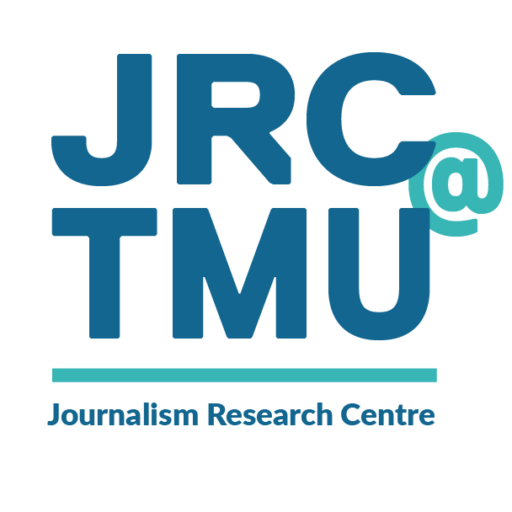By ILINA GHOSH
Staff reporter
Ryerson Journalism Research Centre (RJRC) scholars are working on projects ranging from an investigation into why some police departments refuse to release the names of people who are killed as a result of violence or misadventure, to an examination of local news poverty in communities outside the country’s major media centres.
Much of the research supports the RJRC’s News and Community Research Initiative, said April Lindgren, the RJRC’s academic director. “News plays a powerful role in shaping how people in communities see and relate to one another and RJRC researchers are exploring this from a variety of perspectives,” she said.
Assistant professor Gavin Adamson, for example, is investigating media portrayals of mental illness. Adamson and assistant professor Asmaa Malik are also working on an app that will allow newsrooms to track who reporters quote in stories and whose voices are left out.
Here’s an update on these projects and others that RJRC research associates currently have underway:
- Ivor Shapiro is in the third year of his Canadian Worlds of Journalism study. This study investigates the identities of Canadian journalists: their demographic makeup, ethical approaches and principles while reporting, degrees of trust in specific institutions, etc. The pilot project, which surveyed 100 Anglophone journalists, began in May 2014 with the help of almost $6,000 from Ryerson’s Faculty of Communication and Design (FCAD) and the RJRC. Phase Two and the current Phase Three, followed by two years of information dissemination, are supported by a $136,328 Social Sciences and Humanities Research Council grant.
- Bill Reynolds, director of Ryerson’s Master of Journalism program, received a $7,000 Creative Fund grant for his project, “The Way of the Bike: Living and Dying in the Bike Lane.” It looks at various ways – creative, artistic, architectural, filmic, digital, athletic – that we live our lives, as seen through the spokes of a bicycle wheel.
- Assistant professors Gavin Adamson and Asmaa Malik received $10,000 from FCAD’s Innovation Fund to create the Journalism Representation Index. This app, called “JERI,” will help newsrooms deliver more balanced coverage by providing a score on the types of journalistic sources used and where they are placed in stories.
- Assistant professor Lisa Taylor’s research is being supported by an FCAD project grant. She received $6,900 for “The Unidentified Victim: trends in law enforcement agencies withholding of basic identifying information.” The funding will be used for preliminary investigations into the increased tendency of Canadian law enforcement agencies to withhold the names of individuals killed as a result of violence or misadventure.
- Associate professor April Lindgren is investigating local news poverty with the help of a $15,000 MITACS Accelerate grant. As part of the project, she is also a co-investigator with Jaigris Hodson of Royal Roads University on a successful Insight Development Grant of $54,260 for, “Election news, local information and community discourse: Is Twitter the new public sphere?”
- Janice Neil, associate chair of the School of Journalism, received $1,750 RJRC Research and Development start-up grant for “Curriculum in a Changing Industry: Trends in Journalism Education.” The new project will obtain data to track, document and examine the evolution of journalism education in Canada and how it mirrors, leads or follows an industry in transition.
- Associate professor Anne McNeilly is in the second year of a research project that examines journalism students’ motivations for studying journalism and the work they aspire to do. Her co-investigator is Aneurin Bosley of Carleton University. The study, supported by a $10,000 grant from Ryerson’s Faculty of Communication and Design that was awarded in 2014, grew out of an international study McNeilly participated in titled, “Journalism Students Across the Globe: Professionalization, Identity and Challenges in a Changing Environment.” The grant is also supporting two other studies. One study will examine whether information retention of journalism students who obtain their news from Twitter and/or online news sites is better, the same or worse than journalism students who read the hard copy version of the daily newspaper. The second compares grammar facility between Canadian university journalism students and Chinese journalism students who speak English as a second language.
- Assistant professor Gavin Adamson is in the second year of a research project that equips people with mental illness with broadcast journalism skills and tools, allowing them to tell their own stories. The research team is now in the project’s operations and productions stage, working with 20 participants in recovery centres in Montreal, Halifax and Toronto. Adamson is working within a larger group of researchers and will focus on the journalism aspect of the study: comparing the content produced by the participants with content typically produced by newsrooms and mainstream media on the topic of mental health. Adamson said the hope is that producing these videos will aid in the participants’ recoveries. The work will eventually be shown to health services personnel, students and the general public. The ultimate goal of the project, he says, is to reduce stigma surrounding mental illness. The project is supported by a $380,000 grant from the Canadian Institutes of Health Research.
